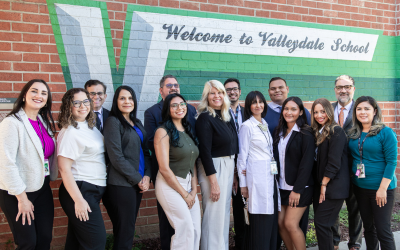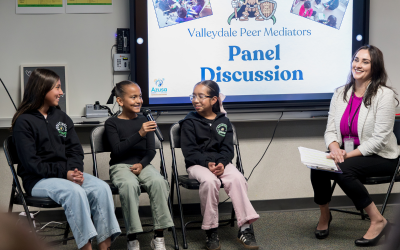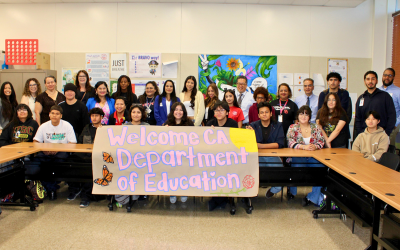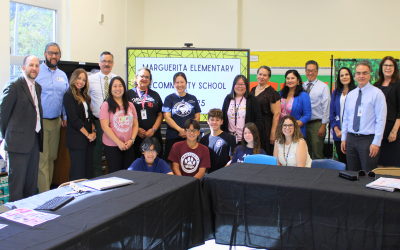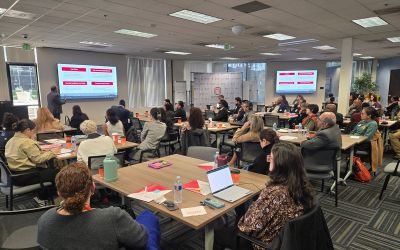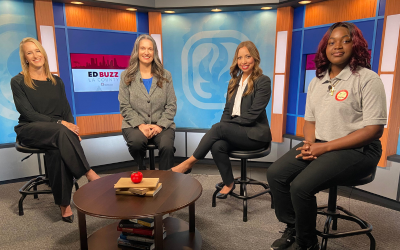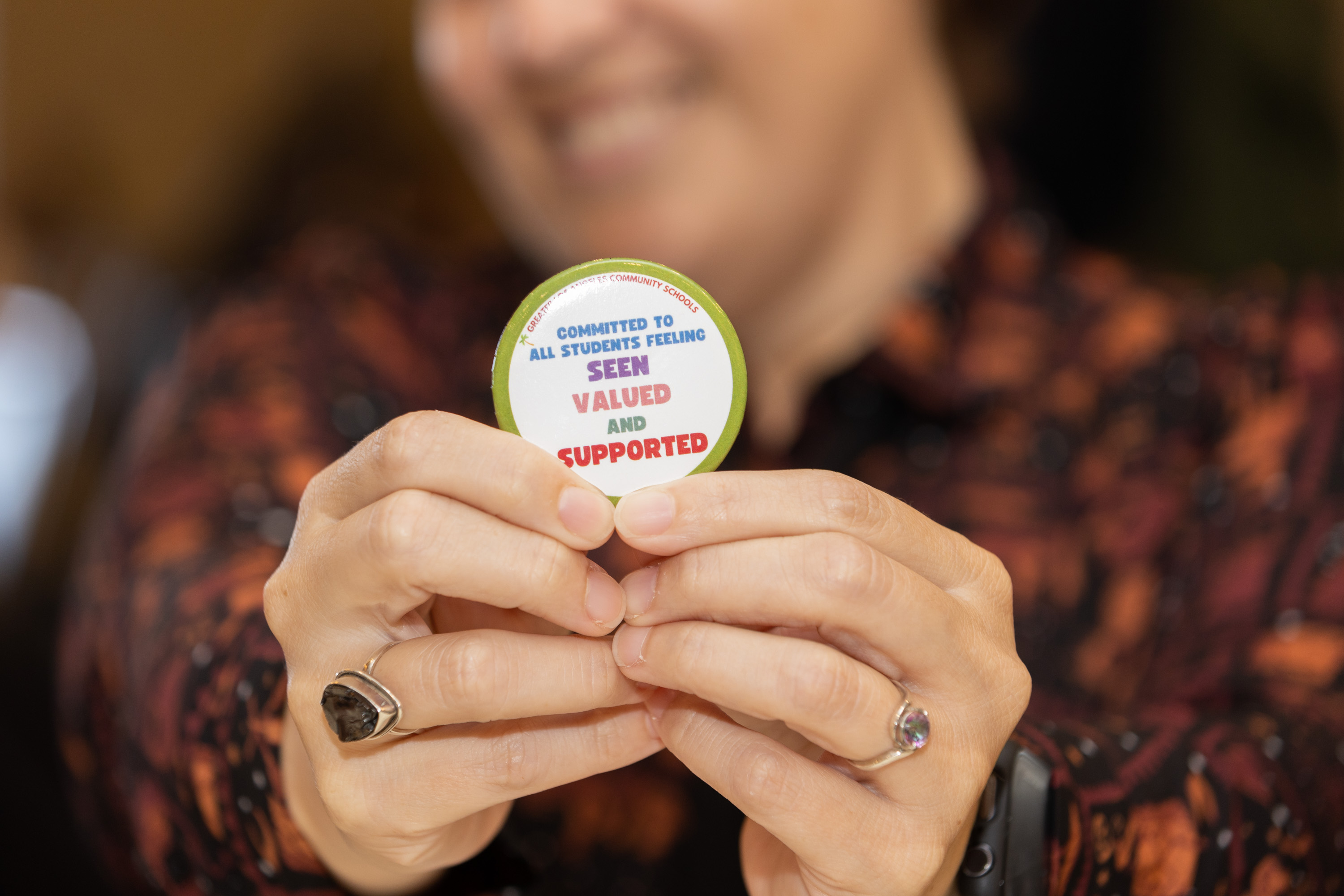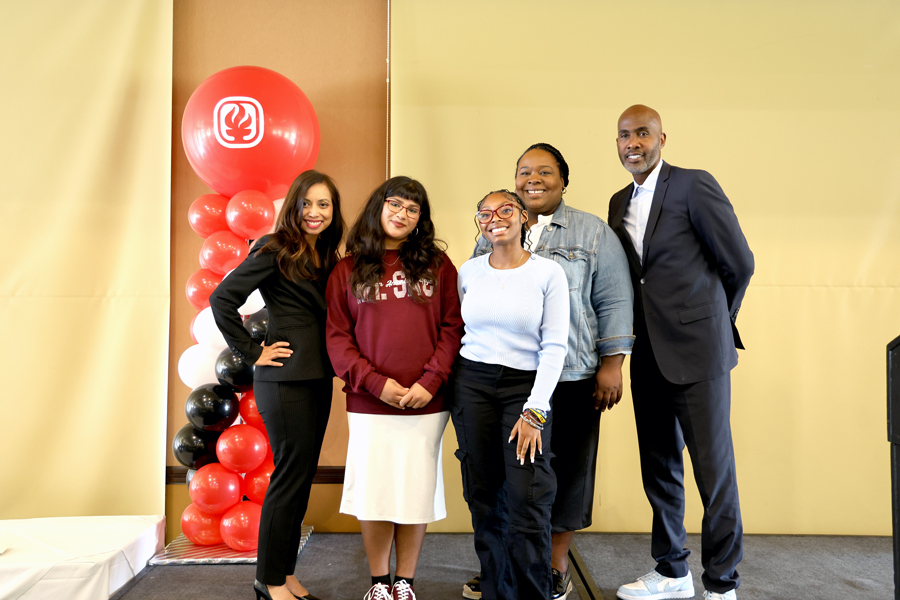Inside Community Schools: Effective Practices Driving Change
Tue Nov 25 13:27:00 PST 2025
Recent visits to schools in the Azusa and Alhambra Unified School Districts show how community schools are creating stronger connections among students, families, educators and communities.
LACOE’s Community Schools Initiative and Greater Los Angeles Regional Transformational Assistance Center (R-TAC) recently partnered with Azusa Unified School District and Alhambra Unified School District to host school-site visits for state and county leaders. The visits showcased how local community schools are implementing the California Community Schools Partnership Program (CCSPP).
LACOE Community Schools Initiative leaders joined California Department of Education Deputy Superintendent of Public Instruction, Dr. Erika Torres, in walking the campuses of Azusa Unified’s Valleydale Elementary School, and Alhambra Unified’s Marguerita Elementary School and San Gabriel High School.
The visits offered an opportunity to step onto school grounds and observe the strategies each district has adopted to support the CCSPP’s framework. Aside from touring each campus, the state and county leaders also had the opportunity to hear firsthand from students, staff, parents and community partners about the impact the CCSPP model has had on their school communities.
“I try to include a sense of belonging at home, but when my kids feel a sense of belonging at school, that is different,” shared Selisa Loeza, an Azusa Unified parent, while sharing a story of how her son’s involvement in his school’s Peer Mediators Program has empowered him to be a leader.
Loeza is also a member of Azusa Unified’s community school advisory council. “Peers can be intense. The sense of authority from adults can be intimidating, but when he says, ‘I feel like a leader, like my voice matters,’ that makes a big difference,” Loeza said.
Community School Practices at Azusa Unified
- Districtwide Community Circles: As a district where all schools are community schools, Azusa Unified leads the way in implementing districtwide Community Circle practices, which support the CCSPP’s cornerstone commitment to Shared Decision-Making and Participatory Practices. This practice fosters a culture of community building and collaborative leadership by inviting individuals to share their thoughts and opinions in a safe and welcoming environment. By implementing this practice across every campus, Community Circles enhance student and family engagement and transform school and district leadership strategies.
- Peer Mediators Program: All Azusa Unified schools have adopted a Peer Mediators Program in alignment with the CCSPP’s cornerstone commitment to Racially Just and Restorative School Climates. This program trains and guides students in conflict resolution skills, empowering them to welcome mediation strategies to address issues with their peers. While visiting Valleydale Elementary School, LACOE leaders and Dr. Torres observed a peer mediation table at work during a recess, witnessing how these student leaders effectively resolved conflicts.
- Student Union Program: Azusa Unified’s Student Union Program aligns with CCSPP’s Integrated Student Supports and Collaborative Leadership and Practices pillars by promoting student agency and leadership. Led by high school students, this program gives students a voice in shaping school culture and decision-making across the district. As student leaders, they advocate for their peers and collaborate with school sites across the district to build connections and create an inclusive and responsive school environment districtwide.
Community School Practices at Alhambra Unified
- Asset Mapping: Alhambra Unified continues to successfully implement asset mapping practices in support of CCSPP’s cornerstone commitment to Assets-Driven and Strength-Based Practice. At San Gabriel High School, teachers began the school year with a community bus tour, curated in consultation with students, families, community members, and local Indigenous community members from the Gabrielino-Tongva Indian tribe. This tour allowed teachers to identify the assets and strengths that exist in the community where many of their students live, which is actually a neighboring community to the school’s location. By exploring the everyday environments of their students, teachers gained a deeper understanding of the resources, culture and strengths that shape the lives of their students and their families.
- Shared Leadership: The district has also incorporated shared leadership practices in support of CCSPP’s cornerstone commitment to Shared Decision-Making and Participatory Practices. At Marguerita Elementary School, authentic student leadership opportunities are elevated through four student leadership groups: Community School Ambassadors, Associated Student Body (ASB), Peer Leaders Uniting Students (PLUS) and Stage Crew. The Community School Ambassadors play a key role in shaping school decisions. They help lead the school’s needs and assets assessment, serve as voting members on the school’s Community School Collaborative, organize activities, lead class presentations and run schoolwide student representative meetings.
Azusa and Alhambra Unified demonstrate how local educational agencies and school sites continue to implement the CCSPP framework. With over 500 CCSPP-funded community schools, Los Angeles County boasts the largest concentration of community schools in the nation, thanks to California’s historic CCSPP investment of $4.1 billion.
LACOE’s Community Schools Initiative, through its Greater Los Angeles R-TAC unit, is honored to lead this movement by supporting all community schools across the region in implementing the CCSPP framework. Together, we’re transforming schools into hubs of connection, inclusivity and empowerment.
